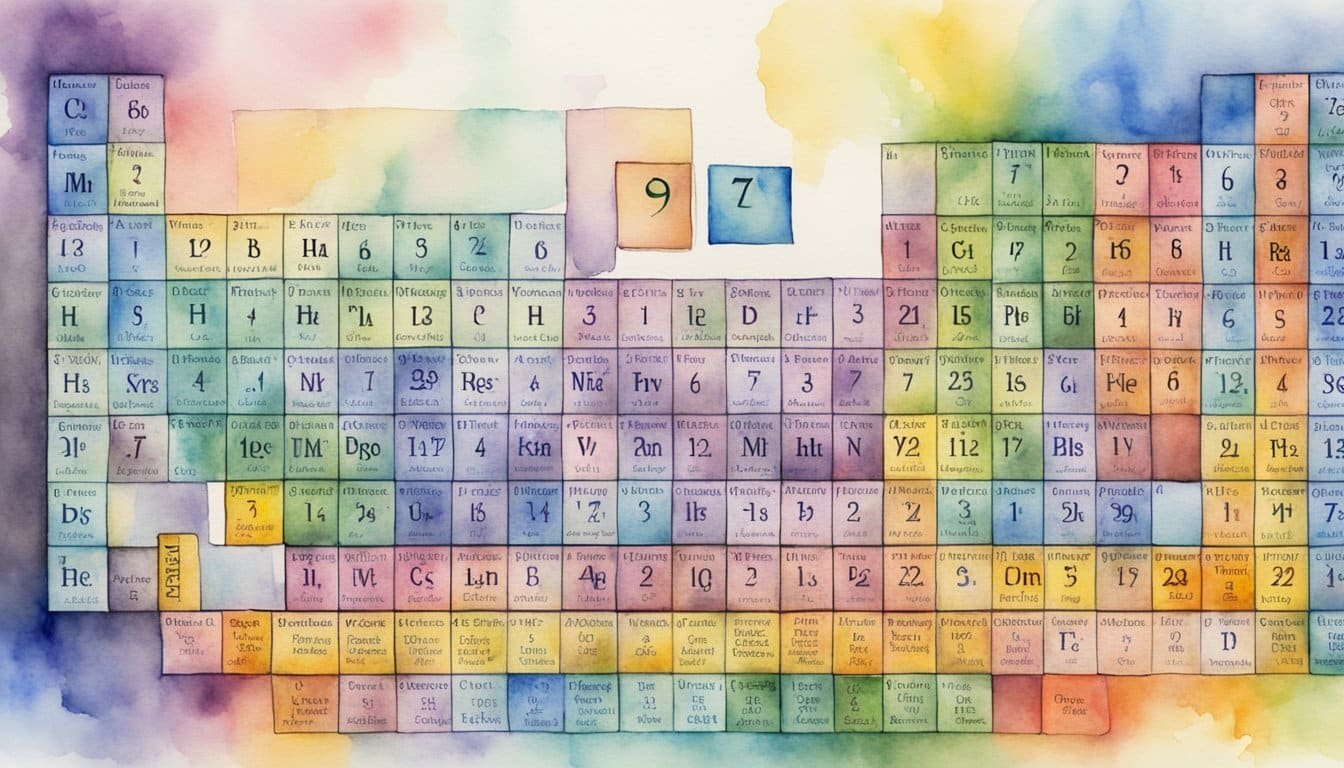Mendeleev’s Revolutionary Table
In 1869, a revolutionary chart organized the known chemical elements in a way that highlighted their properties and relationships like never before. This invention, the periodic table, was the brainchild of Dmitri Mendeleev, a Russian chemist whose work changed the course of scientific understanding.
Genesis of the Periodic Table
Before Mendeleev’s contribution, chemists struggled to understand the relationships between the elements. Mendeleev made a remarkable leap in scientific thinking by introducing the periodic table, ordering elements by atomic weight and grouping them by shared chemical characteristics. He presented this model to the world from his position at the Main Pedagogical Institute in St. Petersburg. His background growing up in Crimea, as well as his scientific rigor influenced by figures like Ivan Pavlovich Mendeleev, equipped him with a unique perspective that led to his groundbreaking discovery.
Dmitri Mendeleev: The Father of the Periodic Table
Mendeleev’s role in chemistry cemented his status as one of the most influential scientists in history. Not only did his periodic table make sense of the elements, but his predictions of undiscovered ones, based on gaps within the table, were astounding in their accuracy. It was as if he held a crystal ball revealing the structure of matter. Dmitri Mendeleev, working tirelessly in St. Petersburg, published “Principles of Chemistry,” a seminal work where he elaborated on the periodic law, which essentially ordered the chemical universe. This move did more than simply provide a new scientific tool; it embodied a shift towards modern chemistry and forever associated Mendeleev’s name with the essence of elemental science.
Organizing the Elements

Dmitri Mendeleev’s periodic table was a groundbreaking scientific achievement due to its ability to predict the properties of both discovered and yet-to-be-discovered elements. This organization was based not just on atomic weights but on periodic trends in chemical properties as well.
Predictive Power of Element Properties
Mendeleev’s table was remarkable for its time, demonstrating an uncanny ability to foresee the characteristics of elements that had not yet been found. When he organized the elements, there were gaps in his table. Yet, he confidently predicted the existence and properties of gallium, scandium, and germanium, elements whose discovery later validated his table’s design and its predictive nature.
Periodicity and Atomic Weights
The underlying genius of Mendeleev’s table is its use of periodicity, where elements with similar chemical properties recur at predictable intervals when ordered by atomic weight. For instance, the alkali metals form one such group, each element spaced out by others with markedly different characteristics. This trend helped chemists of the time, and still assists them today, to understand the classification of elements, the incremental addition of atomic mass, and the complexity of their chemical properties. Mendeleev’s approach was instrumental in recognizing that atomic weight and atomic number were key factors determining the properties of elements, paving the way for the modern periodic table where atomic number is now the organizing principle.
Advancements and Impact

The periodic table as conceived by Dmitri Mendeleev in 1869 has undergone numerous enhancements, reflecting the dynamic growth of chemical knowledge. It started as a significant tool for organizing elements known at the time based on chemical properties and atomic mass. Since then, the discovery of new elements, understanding of atomic structure, and insights into chemical reactivity have expanded its utility far beyond its original design.
Beyond Mendeleev’s Table
Mendeleev’s table set the stage for future scientists like John Newlands, Lothar Meyer, and others, who identified relationships among elements and refined concepts such as atomic number and valence. Later discoveries of protons, neutrons, and electrons allowed the table to evolve based on atomic number rather than atomic mass, solving initial placement problems such as those with iodine and tellurium. The introduction of noble gases like helium and argon into the table required expanding the table’s groups without disturbing its established order.
The identification of new element categories, including lanthanides and actinides, along with the discovery of radioactivity by scientists like Marie Curie, added entirely new rows to the table. Technological advances have also enabled the synthesis of elements heavier than uranium, known as superheavy elements, which continue to be slotted into Mendeleev’s framework.
Legacy and Continuing Relevance
Mendeleev’s periodic table remains a cornerstone of chemistry for its ability to organize elements according to their chemical and physical properties. Its predictive power was such that Mendeleev foresaw the existence and properties of then-undiscovered elements such as silicon and germanium. The periodic system’s structure aids in illustrating periodic trends, such as the increments of reactivity in alkali metals and electronegativity in halogens. Its relevance endures in educational settings, cutting-edge research, and even in industries reliant on materials science.
Mendeleev’s contribution earned him prestigious recognitions like the Demidov Prize and respect from institutions like the Russian Chemical Society. Moreover, the table’s enduring utility across disciplines, from geology to astrophysics, underscores the breadth of Mendeleev’s impact on scientific thought. The framework he introduced not only organizes the elements; it narrates the story of the universe’s building blocks, from the Earth’s crust to distant stars.

